With so many dietary restrictions in place during the Passover week, you might feel stumped about what to eat. But that doesn’t mean your whole diet should consist of matzo sandwiches. There’s a whole world of delicious food you can enjoy during the festival week, and here are 5 of our favorites, excerpted from Mimi Sheraton’s 1000 Foods to Eat Before You Die.
1. Macarons
French
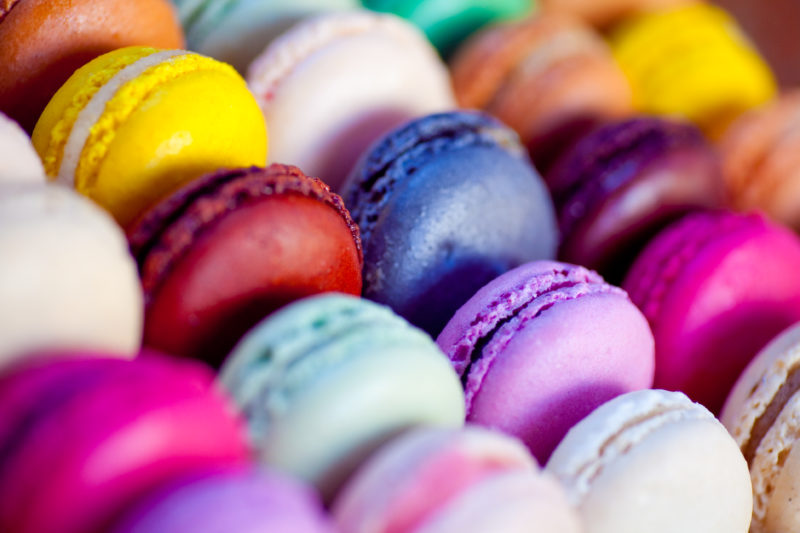
Perhaps history’s first official cookie, the macaron is traced by food historians to Cormery, the commune in central France where it was first made at a monastery in 791. Local legend says the cookies were created in the shape of monks’ navels, but their name comes from the Venetian word macarone, which means fine paste and refers to the ground-up almonds from which they are made. Traditionally, the diminutive cookie involved little more than those almonds and/or coconut, along with sugar and egg whites, but in the name of high fashion, macarons became lighter and more like meringues, sandwiched together with crème, chocolate, ganache, and fruit jam or honey. The original stands unequivocally above the rest. Macarons have the distinction of having been adopted as a Passover seder dessert alongside traditional macaroons. No one is quite sure how this came to be, beyond the cookie’s lack of flour. Several regions in France are famous for macarons, most particularly Saint-Émilion, the small medieval village near Bordeaux in the southwest. In Paris, many fine patisseries specialize in the dessert; the two most famous are Ladurée, which has been baking the treats since 1862 and prides itself on its variety of flavors, and Pierre Hermé, a former head pastry chef at Ladurée who has set up his own shop, which has arguably become even more famous than its forerunner.
2. Charoset
Jewish (Ashkenazic and Sephardic)
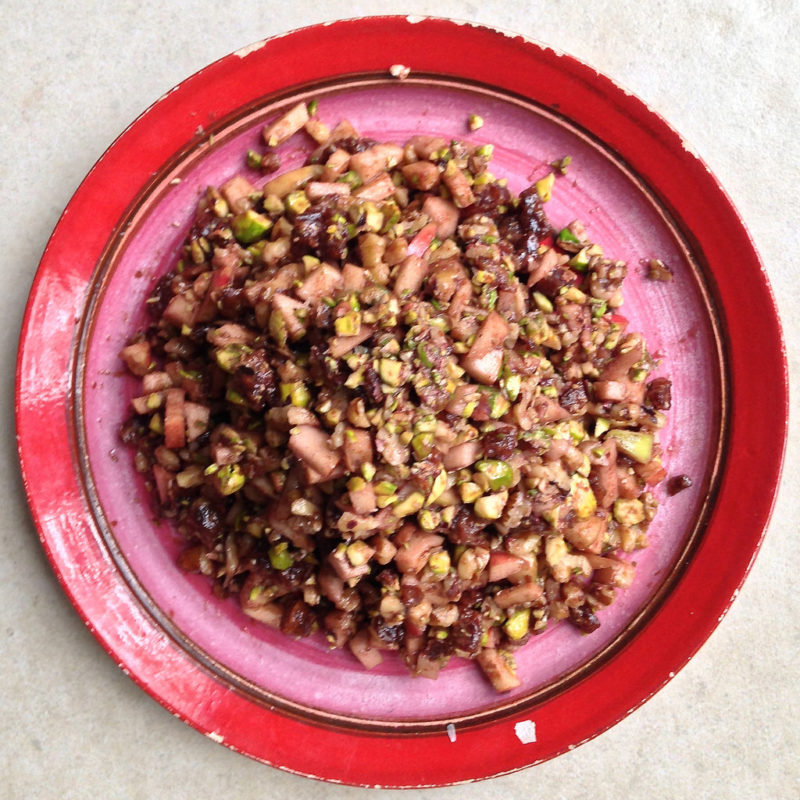
Although it stands as a symbolic reminder of the mortar used by the Jewish slaves who built the pyramids in Egypt, the fragrant spread called charoset deserves more than a once-a-year ritual appearance at the Passover seder table.
The rich fruit spread is made in two lovely versions, delectable either for breakfast or teatime on toasted English muffins, matzos, or firm, lightly sweetened, toasted pound cake. The Ashkenazic standard is a chopped blend of tart, juicy apples, walnuts, red kosher-style sweet wine, sugar, cinnamon, and powdered ginger; Macintosh apples are the perfect choice with Macouns as good stand-ins. Sephardic Jews prepare a richer, midnight-dark mix, chopping dried fruits such as dates, raisins, and figs with walnuts or pistachios, and simmering the lot in wine and spices such as cinnamon and cloves. Both types ripen to maximum flavor when prepared in advance and chilled for twenty-four hours before serving. The Ashkenazic version, if refrigerated, will keep for three days, while the Sephardic will keep for several weeks,
Further information: The New York Times Passover Cookbook edited by Linda Amster (2010); Jewish Cooking in America by Joan Nathan (1994); epicurious.com (search sephardic charoset; traditional apple-walnut charoset).
Tip: For Ashkenazic charoset, the fortified red aperitif wine Dubonnet is a good substitute for kosher sweet wine.
3. Dried Fruit Compote
Jewish
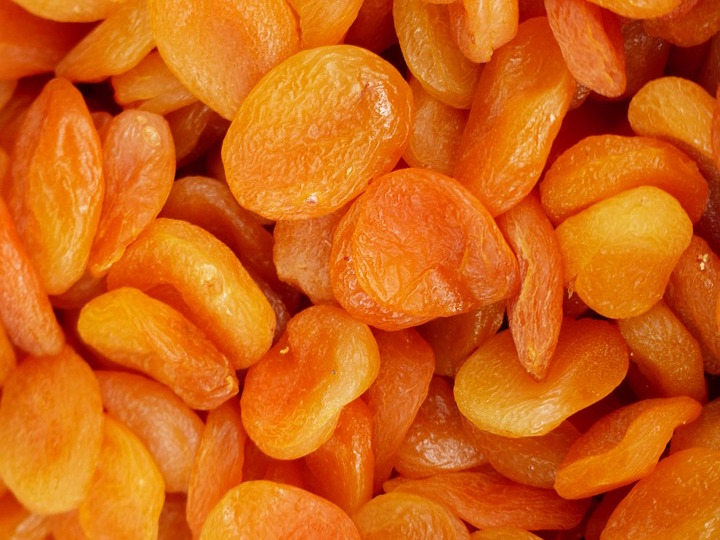
Compote, meaning mixture, is one thing to the French—fresh fruit flavored with wines, brandy, and cream—and quite another to Jewish cooks, who make theirs out of a colorful array of dried fruits. Heavily associated with Passover, the classic seder dessert consists of dried fruits resuscitated by a simmering in a little spiced wine or fruit juice. With its homey charm and deep, warming flavors, the compote is also a year-round favorite as a conclusion to kosher dinners that include meat. Because all ingredients in it are pareve, meaning neutral, it is allowed after both dairy and meat-based meals.
What fruit? Prunes, apricots, apples, pears, cherries, golden raisins, or some combination thereof, simmered slowly with ginger, cinnamon, and perhaps cloves, in a combination of half water, half white or red wine until the fruits are softened and the liquid becomes a smooth, dense syrup. Some Jewish grandmothers add honey for an amber richness, or brown sugar for a caramelized effect, while others squeeze in a bit of the fresh juice from lemons or oranges for a tart finish.
After it is cooked, the compote should be refrigerated for twenty-four hours so the flavors meld and the texture solidifies. The dessert may be served warm or cold; dressed up by spooning it into crystal goblets; or poured into a pan, topped with crushed macaroons or almonds, and baked like a cobbler. In any guise, it has a wonderfully aromatic quality that evokes nothing so much as family dinner and holiday china. It makes an excellent topping for yogurt or ice cream, and a great side dish for roasted poultry or meat. The compote can be stored in a jar or covered bowl in the refrigerator for up to two weeks. One final bonus: Dried fruit is high in potassium, which is said to relieve hypertension—a welcome attribute, perhaps, after the trials of a big family holiday meal.
Mail order: For dried fruit, Russ & Daughters, tel 800-787-7229; Zabar’s, tel 800-697-6301. Further information and recipes: The Veselka Cookbook by Tom Birchard with Natalie Danford (2009); The New York Times Passover Cookbook edited by Linda Amster (2010); kosherfood.about.com (search dried fruit compote); epicurious.com (search fruit compote with port).
Tip: When buying dried fruits, opt for sundried varieties and/or look for the term “unsulfured” on the packaging. Be sure the fruits are moist and shiny as opposed to leathery and dried out.
4. Golden Yoich (Chicken Soup)
Jewish (Ashkenazic)
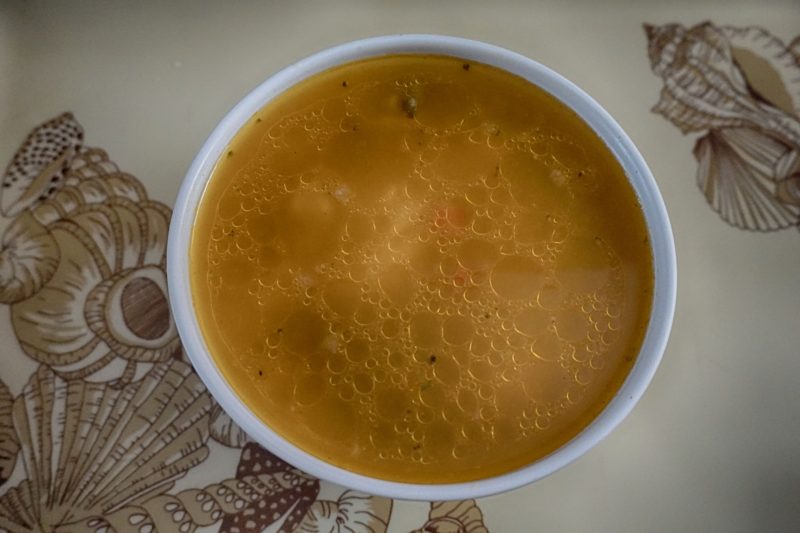
Unrivaled as a panacea for all illnesses of the body and spirit, the soup known as “Jewish penicillin” should be pale and lemony yellow, with tiny globules of fat winking on its surface. Correctly prepared only when it uses a large old fowl weighing at least seven pounds (tough but flavorful), the soup simmers slowly to extract maximum flavor and aroma from root vegetables and herbs—leeks, onions, parsnips, carrots, the white root of Italian parsley known as petrouchka, knob celery and stalk celery with leaves, and sprigs of parsley and dill. Some cooks add a nugget of dried ginger, a chunk of turnip, or even a tomato for additional flavor, but the results are less delicate.
Served steaming hot, spoonful by restorative spoonful, this shimmering, golden soup assures one that all’s right with the world—or will be soon. For added heft and interest, there are garnishes such as wide, silky egg noodles, rice, wontonlike beef-filled kreplach, or, for special occasions and always at the Passover seder, matzo balls, aka knaidlach dumplings.
Where: In New York, 2nd Ave Deli at two locations; Carnegie Deli, tel 212-757-2245; DBGB Kitchen and Bar, tel 212-933-5300; in Houston, Kenny & Ziggy’s New York Delicatessen, tel 713-871-8883; in Chicago, Manny’s, tel 312-939-2855; in Los Angeles, Langer’s Deli, tel 213-483-8050; in Los Angeles and Miami, Jerry’s Famous Deli at multiple locations. Further information and recipes: Joan Nathan’s Jewish Holiday Cookbook by Joan Nathan (2004); The New York Times Passover Cookbook edited by Linda Amster (2010); cookstr.com (search sabbath soup); epicurious.com (search chicken soup lebewohl).
Special events: Chicken Soup Cookoff, Houston, February; Chicken Soup Cookoff, Cincinnati, January.
5. Noant
Jewish (Ashkenazic)
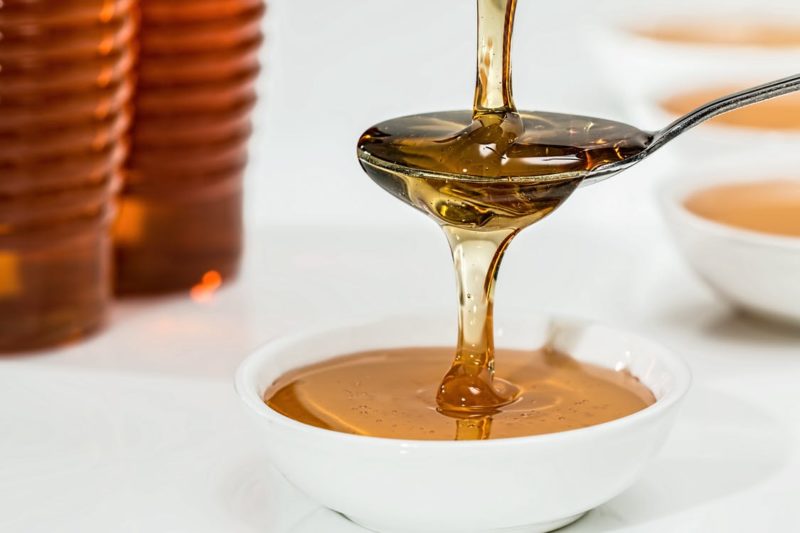
With so many dietary restrictions in place during the Passover week— injunctions against flour, leavening, corn-based products, and more—you might think an observant Jew with a sweet tooth would experience withdrawal. But ingenuity thrives on constraint, and in this case has given us the gift of noant, a chewy Passover indulgence based on dark honey and walnuts enlivened by lemon juice, spicy ginger, sugar, and tangy grated orange rind. Allowed to set for several hours, the mixture becomes a gloriously chewy, tooth-pulling taffy.
Noant
Print RecipeIngredients
- 1 cup honey, preferably dark and unfiltered
- 2 cups sugar
- 1 tablespoon freshly squeezed lemon juice
- ½ teaspoon ground ginger
- Grated rind of ½ medium-size orange
- 1½ cups coarsely chopped walnuts
Instructions
Have on hand a platter or cutting board that is 12 to 14 inches long and 6 inches wide. When the candy is poured onto a board it is easier to cut, but candy poured onto a platter with a small rim becomes a little thicker.
Combine the honey, sugar, lemon juice, and ginger in a heavy, 2-quart saucepan and stir very gently until blended. Place the pan over low heat and cook, stirring constantly until the sugar completely dissolves, about 8 minutes. Increase the heat to medium-low and cook the honey mixture, stirring frequently, until it turns a deep golden brown and forms a soft ball when a few drops are added to a little ice-cold water, about 15 minutes. Be careful that the honey mixture does not boil up and overflow the pan. Remove the pan from the heat immediately and stir in the orange rind and walnuts. Let the honey mixture cool slightly, about 5 minutes.
Meanwhile wet the cutting board or platter with cold water. Pour the honey mixture onto the board or platter. Using a wetted spatula, spread the honey mixture evenly on the cutting board or platter. Let it harden to a stiff, taffylike consistency, 2 to 3 hours. Cut the candy into 1-inch squares to serve. Stored well wrapped in plastic or wax paper in an airtight metal container, the candy will keep for several weeks.
Mail order: For unfiltered honey, billsbees.com; naturenates.com; carusohoney.com.
Tip: Do not make noant on a rainy or very humid day, as it will not harden.
 About the Book:
About the Book:
The ultimate gift for the food lover. In the same way that 1,000 Places to See Before You Die reinvented the travel book, 1,000 Foods to Eat Before You Die is a joyous, informative, dazzling, mouthwatering life list of the world’s best food. The long-awaited new book in the phenomenal 1,000 . . . Before You Die series, it’s the marriage of an irresistible subject with the perfect writer, Mimi Sheraton—award-winning cookbook author, grande dame of food journalism, and former restaurant critic for The New York Times.
1,000 Foods fully delivers on the promise of its title, selecting from the best cuisines around the world (French, Italian, Chinese, of course, but also Senegalese, Lebanese, Mongolian, Peruvian, and many more)—the tastes, ingredients, dishes, and restaurants that every reader should experience and dream about, whether it’s dinner at Chicago’s Alinea or the perfect empanada. In more than 1,000 pages and over 550 full-color photographs, it celebrates haute and snack, comforting and exotic, hyper-local and the universally enjoyed: a Tuscan plate of Fritto Misto. Saffron Buns for breakfast in downtown Stockholm. Bird’s Nest Soup. A frozen Milky Way. Black truffles from Le Périgord.
Mimi Sheraton is highly opinionated, and has a gift for supporting her recommendations with smart, sensuous descriptions—you can almost taste what she’s tasted. You’ll want to eat your way through the book (after searching first for what you have already tried, and comparing notes). Then, following the romance, the practical: where to taste the dish or find the ingredient, and where to go for the best recipes, websites included.
Buy the Book
Amazon | B&N | Indiebound | Workman


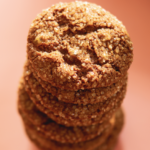

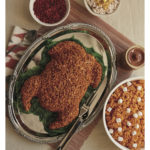
No Comments